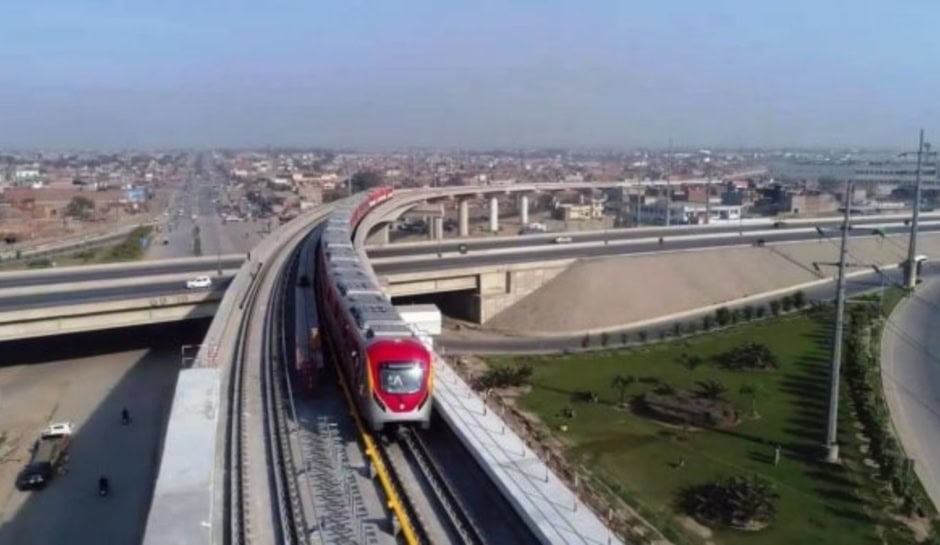Pakistan has entered a groundbreaking phase in public transportation with the launch of its first trackless, ticketless, solar-powered metro system in Lahore. This futuristic initiative, dubbed the Super Autonomous Rail Rapid Transit (SRT), reflects the country’s push toward cleaner, smarter, and more efficient urban mobility.
Led by Punjab Chief Minister Maryam Nawaz, this ambitious project is part of a five-year transport master plan that aims to modernize transit infrastructure while significantly reducing carbon emissions and dependency on fossil fuels.
What Makes This Metro Unique?
Unlike conventional metro systems that rely on expensive rail infrastructure and rigid tracks, the SRT operates on virtual tracks predefined digital paths navigated using GPS, sensors, and optical guidance systems. This allows the electric trams to move along regular roads with metro-level accuracy, without the need for rails.
Furthermore, it is ticketless, eliminating the traditional paper or card-based fare systems. Future phases will enable contactless access via mobile apps, biometric authentication, or QR-code scanning, making the entire commuting experience seamless and fully digital.
Live Demonstration and Testing in Lahore
The pilot phase of the SRT system has begun near Lahore Airport, where a fully functional demonstration vehicle is currently undergoing real-world testing. Engineers are evaluating performance metrics such as battery range, navigational precision, acceleration, braking, and passenger handling under urban traffic conditions.
The pilot test area includes clearly marked virtual tracks, charging docks, and support systems. Public officials, transport experts, and engineers have observed trial runs and gathered feedback to fine-tune the system before a wider rollout.
Clean, Green, and Solar-Powered
The metro trams are entirely electric and supplemented by solar energy, aligning with Punjab’s environmental goals. Each vehicle is equipped with high-capacity batteries and regenerative braking systems to maximize energy efficiency.
Charging stations, many powered by solar panels, are being installed across test zones and will later be deployed in additional cities. The system offers a zero-emission solution, reducing air and noise pollution while supporting Pakistan’s commitments to sustainable development and climate resilience.
Passenger Capacity and Comfort
Each tram in the SRT fleet can carry between 250 and 300 passengers, offering air-conditioned interiors, ergonomic seating, and digital information panels. Additional planned features include:
- Real-time route tracking
- Wi-Fi connectivity
- CCTV surveillance for onboard security
- Wheelchair access and priority zones for women and differently abled commuters
This focus on comfort and inclusivity aims to make the service attractive across all demographics.
Strategic Vision: Punjab’s Transport Master Plan
The launch of the SRT in Lahore is just the beginning. As part of the broader master plan, the government intends to expand the system to 30 cities across Punjab, including Faisalabad, Rawalpindi, Multan, and Gujranwala. The plan envisions a connected, sustainable transit network that eliminates congestion, boosts economic activity, and improves air quality.
The project aligns with other ongoing initiatives such as:
- Introduction of smart metro cards for unified public transport access
- Deployment of electric buses and rickshaws
- Solar integration into existing infrastructure
- Inter-city route digitization and traffic optimization using AI
Together, these efforts aim to establish Punjab as a model province for smart urban development and mobility solutions.
Economic and Social Benefits
The economic ripple effects of this project are vast. Local assembly and future manufacturing of the metro units could stimulate job creation, technology transfer, and EV supply chain development. The reduced dependency on fossil fuels will lower the import bill and improve the region’s trade balance.
Socially, the project enhances public accessibility, particularly for marginalized communities. Ticketless travel systems eliminate barriers for daily wage earners, students, and rural migrants who previously found traditional fare models unaffordable or cumbersome.
Safety, Maintenance, and Monitoring
The SRT project prioritizes safety with:
- Collision avoidance sensors
- Automated emergency braking
- Operator override controls
- Scheduled maintenance protocols
A centralized control room monitors all trams in real-time using IoT (Internet of Things) infrastructure. Alerts are triggered for route deviations, system malfunctions, or overcrowding, enabling immediate intervention and system stability.
Roadmap Ahead
Following the successful pilot run in Lahore, authorities plan to initiate procurement and deployment in additional districts within the next 12 months. Future integration includes interoperability with:
- Existing Lahore Metro and Orange Line
- Ride-hailing platforms for first-mile and last-mile coverage
- Urban planning projects and smart city dashboards
The project is being supported through a mix of provincial budget allocations, technology partnerships, and private sector investment, ensuring scalability and long-term viability.
Conclusion: Pakistan’s Leap Toward Future Transit
The launch of the trackless, ticketless, solar-powered SRT metro marks a pivotal moment in Pakistan’s transport transformation. It reflects not only technological innovation but also a commitment to sustainable development, economic empowerment, and inclusive urban planning.
As Pakistan paves the way for smart, green mobility, the rest of South Asia and perhaps the world will be watching how Lahore’s revolutionary metro sets a benchmark for the cities of the future.



Comments (0)
No comments yet. Be the first to comment!
Leave a Comment